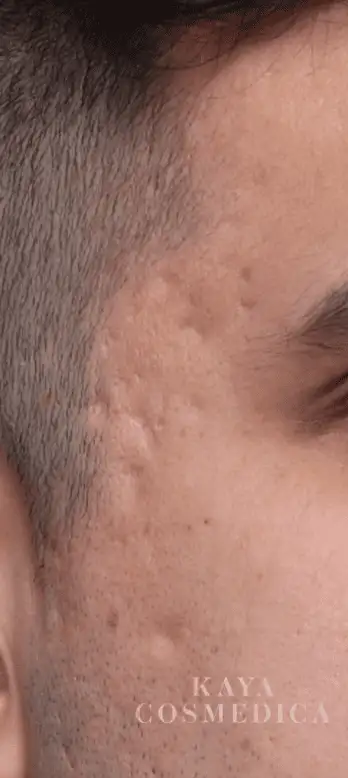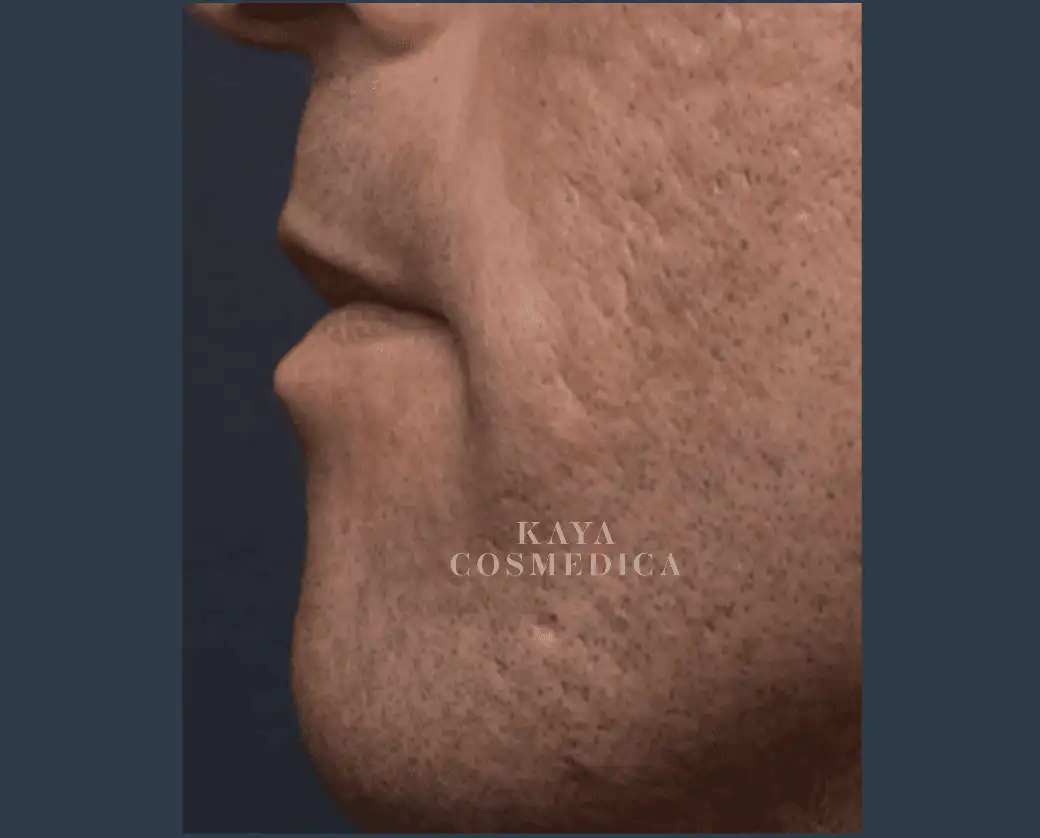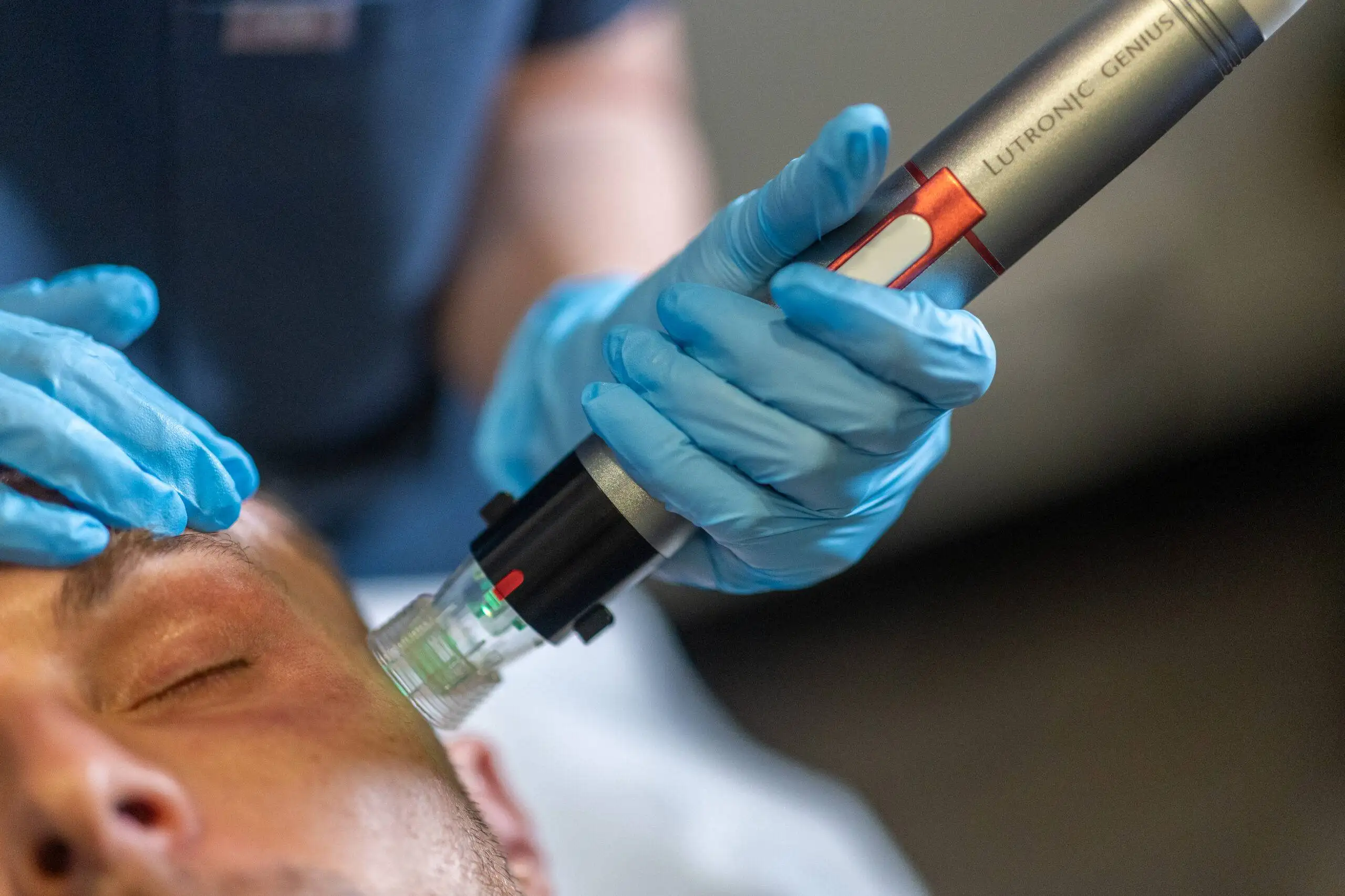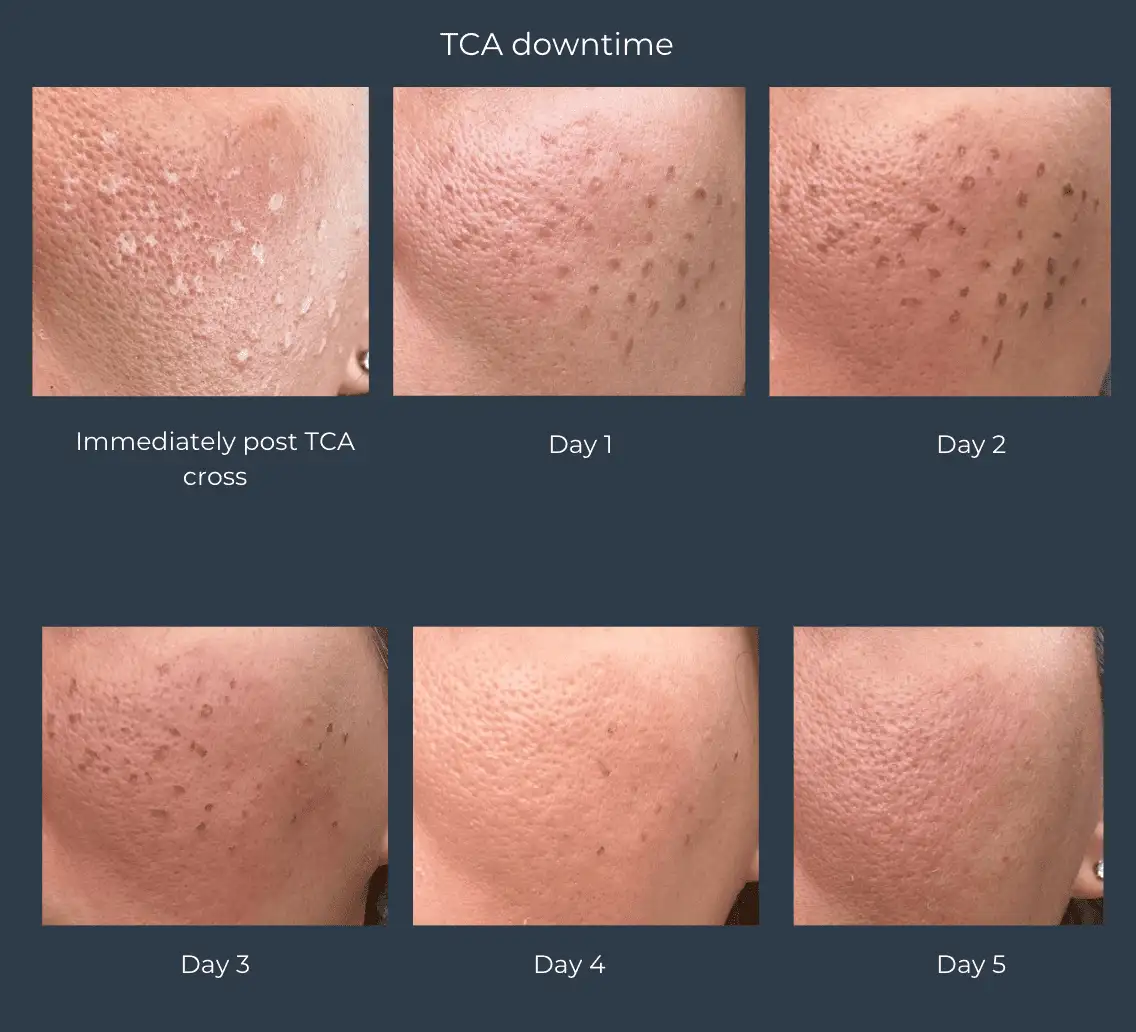Acne Scarring

Acne scarring is an unfortunate and common complication of acne, affecting skin texture and appearance. There are many types of acne scarring and can have marked psychological effects on one’s self esteem. Treatment options are tailored depending on skin type, scar type and severity for optimal results.
Types of Acne Scarring
When acne cysts or nodules rupture, either on their own or when disturbed through skin picking, they will heal naturally but can often leave behind scar tissue, the natural and unavoidable result of the healing process. Even if you finally get your acne under control, you may have substantial scar tissue to manage.
Acne scars can often be worse than the acne itself because they are troublesome, time-consuming to conceal, and difficult to manage on your own. The good news is that there are multiple treatments available at Kaya Cosmedica to help improve the appearance of scarring. Treatment options depend on the type of acne scarring present.
The primary types of acne scarring include
- Atrophic scars
- Ice pick scars: Narrow, deep pitted scars that resemble small deep holes in the skin. These often extend into the dermis of the skin and can be challenging to treat
- Rolling scars: Wave like or undulating scars that are broad and shallow. These are typically caused by tethering of the deeper layers of the skin.
- Boxcar scars: These scars are wide and have well defined edges giving them a box like appearance.
- Hypertrophic scars: Raised, thick red or pink scars. Develop as a result of over production of collagen during the healing process. Common on the chest, shoulders and back
- Keloid scars: A type of hypertrophic scar that extends beyond the normal boundaries of the acne lesion. More common in those with a genetic predisposition.
- Post inflammatory hyperpigmentation: Not a true scar. Dark areas left on the skin after an acne lesion has healed due to increased melanin production during the inflammatory process. These fade with time.
- Erythematous scars: Not a true scar. Flat, pink or red areas that develop after an acne lesion has healed as a result of inflammation. These fade with time.

Treatment Options For Acne Scarring
Medical Skin Peels
Medical peels can treat many forms of skin damage, including improving the appearance of acne scarring. During a chemical peel for acne scarring, a solution containing acids is applied to the skin, which causes the top layer of the skin to peel off. The type of peel that is best for you will depend on the severity of your acne scars and your skin type.
Microneedling
By promoting the production of collagen and elastin, microneedling with the Dermapen 4 device can help improve the texture and appearance of acne scars. As the new collagen and elastin fibres grow, they fill in the indentations caused by acne scars, leaving the skin smoother and plumper.
Radiofrequency Microneedling
A more advanced version of microneedling adds radiofrequency (RF) energy to the treatment. RF microneedling can be particularly effective for treating acne scars because it can reach deeper into the skin than traditional microneedling. By heating these deeper layers, RF microneedling can promote collagen and elastin production and improve the overall texture and appearance of the skin. At Kaya Cosmedica, we perform RF microneedling treatments with the Lutronic Genius system.
Dermafrac
Dermafrac can treat post-inflammatory hyperpigmentation, a common condition that occurs when the skin produces too much melanin in response to inflammation, such as from acne. This excess melanin can result in dark spots or patches on the skin.
For PIH, the serum used during the Dermafrac treatment may contain ingredients such as vitamin C or kojic acid, known to brighten skin tone. These ingredients work by inhibiting melanin production in the skin, which can help reduce the appearance of dark spots and patches.
Subcision
Subcision is an ideal treatment for depressed scars. It is a medical procedure performed on an outpatient basis and uses a specialised hypodermic needle to break the fibrotic strands that tether the scar tissue to the underlying tissue. This technique can help release the upper layers of skin and reduce skin depressions resulting from scarring. As the skin heals, more collagen and elastin are produced, naturally improving skin tone with better hydration.
Dermal Fillers & BioStimulators
Dermal fillers may also be used to smooth the skin where acne scar tissue has left depressions and become a cosmetic concern. While not a permanent solution, injectables immediately restore lost volume, creating smoother, more attractive skin, and, in addition, biostimulators naturally boost collagen and elastin in the skin. This treatment can lead to long-lasting improvements in skin health and appearance.
Tca Cross
TCA CROSS is the chemical reconstruction of skin scars (CROSS) with trichloroacetic acid (TCA). This treatment is used to diminish the appearance of ice-pick acne scars in patients of all skin tones. During a TCA CROSS session, the skin is cleansed, and a small amount of concentrated TCA is applied to acne scars using a toothpick. The TCA triggers a local inflammatory reaction that stimulates the production of new collagen.
Over time, the new collagen fibres remodel the skin and ‘fill in’ the scar. Most patients require three to six TCA CROSS treatments for maximum improvement. The recommended sessions may be scheduled at six– to eight-week intervals over six months. TCA CROSS is often used in combination with other scar treatments.
Tixel
Tixel is a fractional rejuvenation treatment that uses heat to stimulate the skin’s natural healing response. This response includes the production of collagen and elastin, which can help fill in the indentations caused by acne scars. Tixel can also help improve the overall texture and appearance of the skin.
The Tixel system offers three treatment modes: ablative, non-ablative, and open-channel. The modes differ in intensity, expected downtime, and optimal number of treatments. The benefits can last one to two years upon completion of the treatment protocol.
Bbl Photofacial
Sciton’s BroadBand Light (BBL) technology is a very powerful and precise way to target the redness and pigmentation resulting from acne scarring. BBL’s blue-light spectrum targets acne-causing bacteria on the skin’s surface and in the sebaceous glands. With a yellow filter applied, BBL can help reduce redness and discolouration. An infrared light may be used to trigger the body’s natural healing process, targeting deep acne lesions.


BOOK A CONSULTATION
Reclaim Smooth Skin with Specialised Acne Scarring Treatments At Kaya Cosmedica!
At Kaya Cosmedica, the team are committed to helping you feel less self conscious about your acne scarring, with treatments aimed at improving their appearance. We take a customised, individualised approach to help you get more successful outcomes.
To learn more about your options in acne scarring and other treatments, schedule your consultation using our convenient online booking platform or call 03 9329 9991 to book your appointment..
